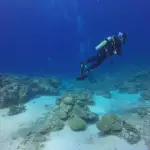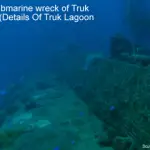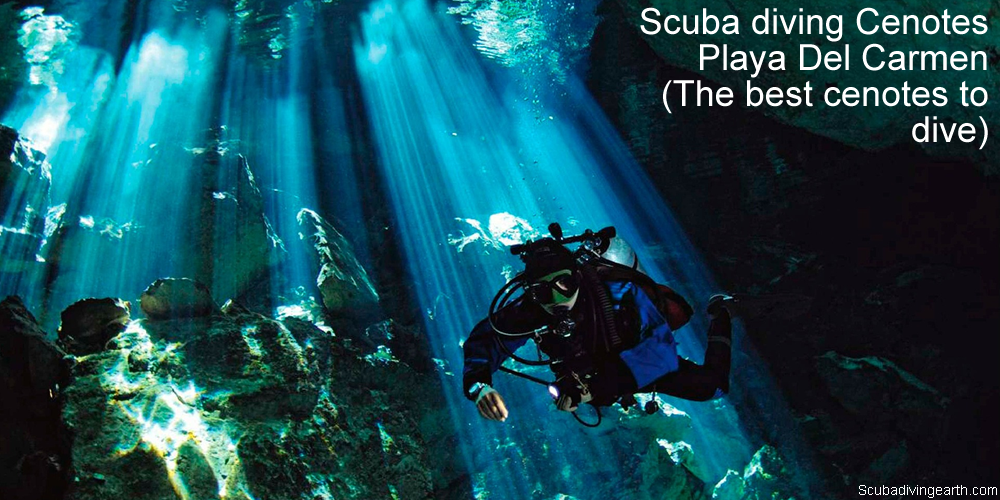
Mexico is the best place to dive cenotes
This article is about scuba diving cenotes Playa Del Carmen. Mexico is the best place to find Cenotes. Cenotes are surface connections to subterranean water bodies. Some of the best known cenotes, like Dos Ojos Cenote and Casa Cenote or the Cenote at Chichen Itza, are the largest open water pools. These pools can measure some tens of meters in diameter.
3 of the best Cenotes for beginners in Mexico Cenotes Playa Del Carmen:
- Dos Ojos Cenote: The best known cenote in Mexico with over 5 miles of caverns to explore.
- Casa Cenote: Located in the Riviera Maya region of the Yucatan Peninsula.
- Gran or Grand Cenote: Extremely popular with snorkelers with crystal clear waters.
The best way to dive Mexico is by a scuba diving liveaboard. You can check the latest and best deals on Mexico liveaboards using the following window:
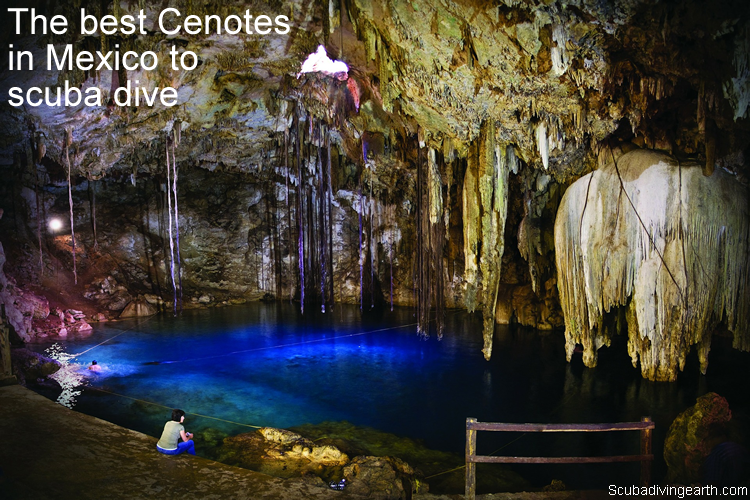
The best Cenotes in Mexico to scuba dive
If you want to experience crystal clear waters of the Cenotes of Mexico, let’s take a look at the best ones to scuba dive.
But as a warning, please do not dive these cenotes of Mexico unless you are suitably trained in cave or cavern diving.
Before you travel to Playa Del Carmen, make sure you’ve done the training. This way you’ll stay safe and enjoy the experience of scuba diving cenotes Playa Del Carmen.
1. Dos Ojos Cenote – Two Eyes in English
The Dos Ojos Cenote is one of the best known Cenotes in Mexico.
The area of Mexico where the underwater rivers that inter-connect the cenotes are mostly found in the Yucatan Peninsula. The Dos Ojos Cenote is the world’s third largest cave system. This cenote is located 22 kilometres (14 miles) north of Tulum in the Riviera Maya.
Dos Ojos Cenote diving
The Dos Ojos has over 8 kilometres (5 miles) of caverns to explore. This is probably the most popular cenote, as it is one of the most beautiful of all cenotes in Mexico.
The caves and caverns of Dos Ojos has been dived by professional divers and has even been featured in movies. The Dos Ojos underwater cave system was featured in a 2002 IMAX film, Journey Into Amazing Caves. It was also featured in the 2006 BBC/Discovery Channel series Planet Earth too.
The underwater cavern system of the Dos Ojos is still being explored and discovered. But to date it opens up to 28 different cenotes.
The water temperature is around 24 °C (75 °F). It is also a good cenote for beginner cavern divers.
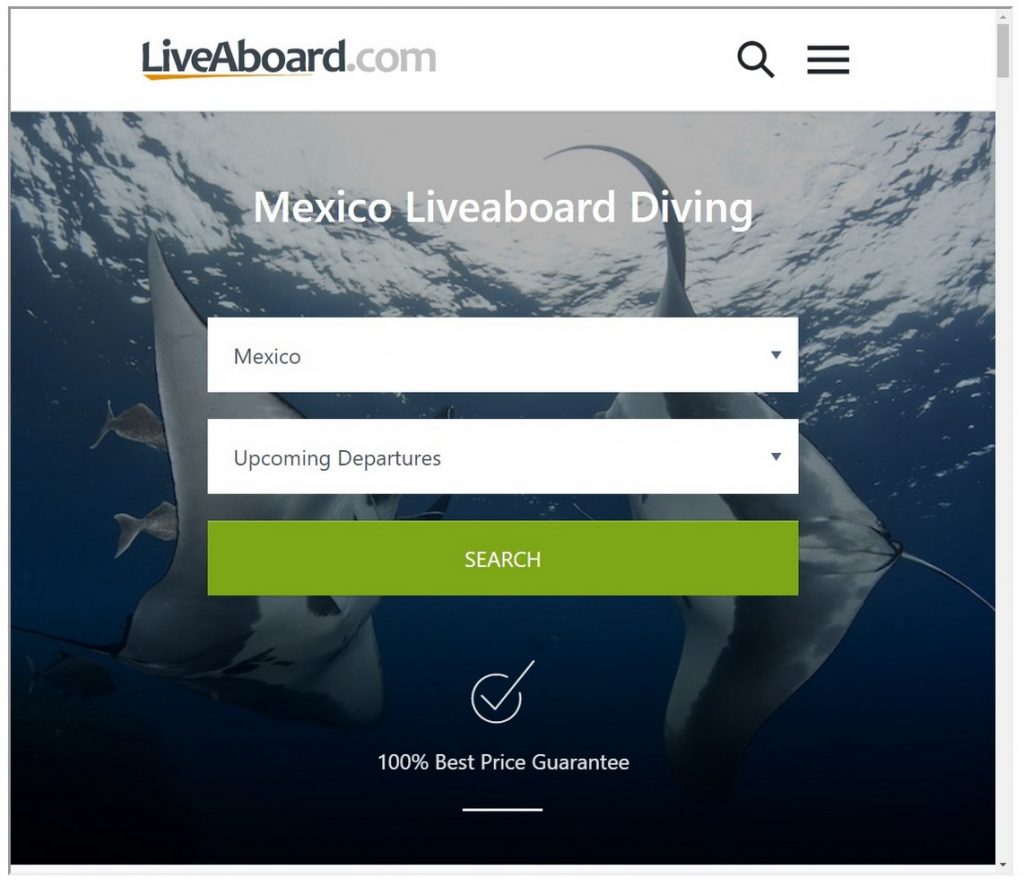
How to get to Dos Ojos
The Dos Ojos cenote is found in the Dos Ojos Natural Park. This park is on the road to Tulum and is about 52 kilometres from Playa del Carmen. This is a 55 minute journey.
There are many flights from either the UK or the US to Playa Del Carmen. For example, a direct flight from London is about 10 hours 35 minutes.
But if you’re flying from the USA and for example from New York, the flying time is around four hours to Playa Del Carmen.
More Reading: How long should you wait to fly after diving? (What’s safe?)
Video of Dos Ojos Cenote
Scuba diving in the cenote Dos Ojos. Discover one of the most beautiful cenote of the Riviera Maya located between Playa del Carmen and Tulum. An amazing cenote dive, easy and accessible for all certified divers.
2. Casa Cenote
The next best known cenote of Mexico is Casa Cenote. Just like Dos Ojos Cenote, the waters of Casa Cenote are just as clear. This cenote is also located in the Riviera Maya region of the Yucatan Peninsula.
Casa Cenote is further along the 307 towards Tulum and about 57 kilometres (36 miles) from Playa Del Carmen. This is approximately an hour’s journey.
There have been sightings of a Casa Cenote crocodile! The crocodile is named Pachito and has never attacked anyone snorkeling or diving in the Casa Cenote yet! He seems to keep his distance from people swimming and snorkeling in the cenote, so nothing to worry about.
Video of Casa Cenote
The last dive of our trip to Mexico was in Casa Cenote. A shallow, easy dive with lots to see.
3. Gran Cenote or Grand Cenote
Gran or Grand Cenote is one of the top diving spots in Riviera Maya. This Cenote is extremely popular with snorkelers and just like the other cenotes, the water is crystal clear too.
Gran Cenote is the second largest underwater gallery in the world. It has nearly 175 kilometres (110 miles) of galleries and about 130 connected Cenotes. If you’re going to dive the cenotes of Mexico, Gran Cenote is must dive in the Yucatan Peninsular.
Just like Casa Cenote and Dos Ojos Cenote, Gran Cenote is a perfect dive site for beginners. In fact this cenote is a perfect introduction to scuba-diving in Cenotes. However, as already explained, please do not scuba dive a cenote without the proper cave or cavern diving training.
How to get to Gran Cenote
To get to Gran Cenote is just beyond Tulum and is about 67 kilometres (42 miles) from Playa Del Carmen.
What is a Cenote?
Cenotes were created when the limestone bedrock collapsed to expose a sinkhole. These natural pits or sinkholes are filled with crystal clear fresh water.
The exposed part of a Cenote is only a small part of what’s really going on underground. Cenotes are a part of a huge underground network or labyrinth of inter-connecting caves and underwater rivers.
The rain water percolates down through the limestone rock, wearing away these underground tunnels. These underground waterways eventually find their way to the sea.
Mexico is known for the most Cenotes in the world. This is especially true in the the Yucatán Peninsula of Mexico. In the Ancient Maya times Cenotes were used for sacrificial offerings, mostly of animals.
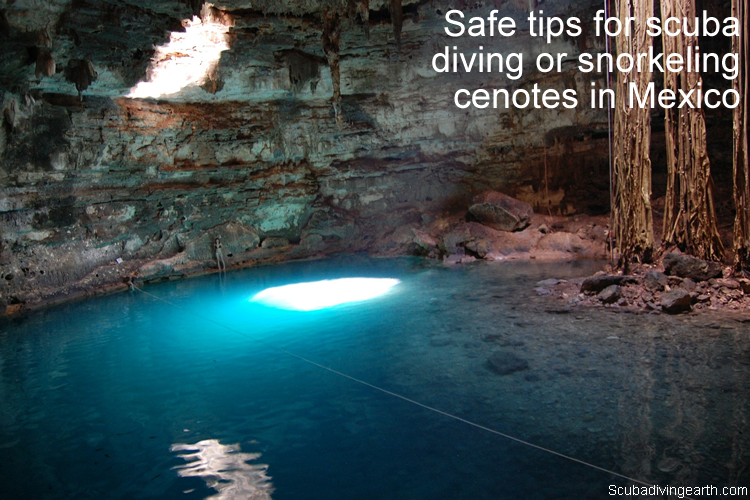
Safe tips for scuba diving or snorkeling cenotes in Mexico
As with all sports it’s important to stay safe and follow what’s best cavern diving practice.
Scuba diving a cenote means you’re diving into an overhead environment. This is cavern or cave diving and can be extremely risky. Especially if you’re not suitably trained and don’t know what you’re doing. The reason why it’s a higher risk is that it does not allow a direct ascent to the surface.
To safely dive a Cenote you must be trained or certified as a cavern diver. Additionally, to participate in a cenote dive you should only do so with a suitably qualified professional cavern diving guide. A guide who knows the cenote you’re diving and knows the way in and the way back out.
Most cenote diving is done using a rope. The rope is used as a guideline to find your way back out. Many of the popular cenotes in Mexico have permanently installed guide ropes for safety.
The international scuba diving training agencies such as PADI, BSAC, NAUI, SSI and CMAS, state clearly that no open water instructor may take a student into any type of overhead environment.
However, despite the rules and the risks, many open water instructors are taking their open water students into these overhead environments.
Are cenotes dangerous?
Cenotes can be dangerous , especially with small children. Most cenotes are almost endlessly deep. Most have steep sides with little space to wade. If you would like to experience a Cenote as a family the best cenote to visit Cenote Azul.
Travel or dive insurance for diving cenotes
Be aware that insurance companies do not like cave diving. You’ll find that most travel insurance policies specifically exclude cave diving.
If you are planning on diving the Cenotes of Mexico, check your insurance. To be on the safe side, take out specialist diving insurance that covers you for cave or cavern diving.
Insurance companies don’t cover cavern or cave diving due to the high risks involved with the sport. Cave diving has been classified as the most dangerous or deadly sport in the world.
It’s argued that most of those who die cave diving are not trained cave divers. Which means they shouldn’t have been there in the first place. It is a much safer sport with the correct training.
No sun tan lotion when you dive cenotes
One major rule to follow when swimming, snorkeling or scuba diving a cenote is to not to wear any sun tan oil or lotion.
This even applies to the Eco-friendly sun tan lotions. The water in the cenotes are all inter-connected and an important Eco-System.
I hope you enjoyed this article about scuba diving cenotes Playa Del Carmen
I’d love to hear from you. Tell us about your adventures of diving and snorkeling, in the comments below. Please also share your photos. Either from your underwater cameras or videos from your waterproof Gopro’s!
If this article hasn’t answered all of your questions. If you have more questions either about snorkeling or types of scuba diving (or specifically about scuba diving cenotes Playa Del Carmen), please comment below with your questions.
There will also be many more articles about scuba diving (and snorkeling) for you to read and learn about these fabulous sports.
Have fun and be safe!

